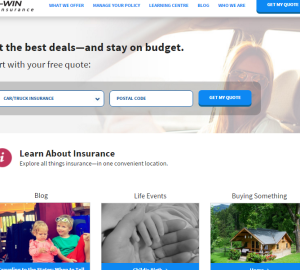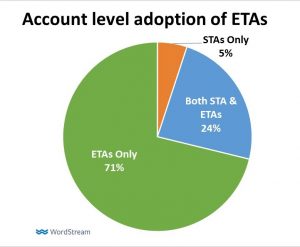 Whether you’re ready for a new website or starting from scratch, an effective website can have massive implications on the success of your business. Pairing an inbound marketing strategy with a website optimized for inbound offers even greater benefits and can help generate more traffic and quality leads. And, fortunately many of the same principles of an inbound marketing strategy can be applied to web design as well. A website optimized for inbound is one that is centered around providing value to a small group of narrowly defined personas and includes these key elements:
Whether you’re ready for a new website or starting from scratch, an effective website can have massive implications on the success of your business. Pairing an inbound marketing strategy with a website optimized for inbound offers even greater benefits and can help generate more traffic and quality leads. And, fortunately many of the same principles of an inbound marketing strategy can be applied to web design as well. A website optimized for inbound is one that is centered around providing value to a small group of narrowly defined personas and includes these key elements:
SIMPLICITY
The more, the better is certainly not a concept to apply to inbound websites. Not only is the amount of content overwhelming to a visitor, but it can look tacky. When a visitor isn’t guided where to click, they typically leave the website. Next time you’re browsing the web, be concious of how quickly you leave a website and your reasoning behind it. Usually, we leave websites because we don’t find the information we’re looking for and this is often because the site is cluttered or confusing. See below for two examples of homepage designs. The left reflects an outbound or traditional marketing style while the right follows an inbound style. Where would you click on the left homepage vs. the right?


Colors should contrast well and fonts should be legible and not too small. A good rule of thumb when designing a new website is to question the purpose of each new element. If it doesn’t serve a purpose, is it necessary to the design?
PERSONALIZATION
A website doesn’t need to be static. In fact, an inbound website includes incorporating dynamic personalization details into your site. If you’ve ever encountered a ‘recently viewed items’ banner on a website, this is an example of personalization, but there are countless other ways to use personalization. This concept uses behavioral and demographic info to create dynamic and customized content for that particular viewer. In most cases, a visitor is not aware they are seeing personalized content because it’s implemented on the back-end of a website and should flow with the visitor’s natural browsing course. Not only does personalizing content save time as the designer doesn’t need to make drastic web changes frequently, but also keeps visitors on your site for a longer period of time and drives conversions.
CLEAR CALLS-TO-ACTION
A website optimized for inbound will have distinctive CTAs. CTAs should have concise yet engaging text and also include eye-appealing imagery and colors. Placing them high up on the page so the user doesn’t need to scroll down to find the content will help engage visitors. Below is an example of a call-to-action that demonstrates these qualities and would follow best practices on an inbound-optimized website.
GOAL DRIVEN
Like any component of an inbound marketing strategy, each page on a website should have a goal. Whether it’s to generate leads, increase blog subscribers, or get more social shares, each page should be designed to meet that goal. Ask yourself what you’re trying to accomplish with each page before going live, and implement the components or strategy required, which this blog post should help you identify.
RESPONSIVE
In today’s mobile-obsessed world, you’re well aware of the need to optimize your website for mobile devices. However, having a mobile-only version is not only a dying trend in web design, but also a no-no in inbound as well. A responsive website decreases bounce rates as this platform makes visitors happy! They can easily navigate to the content they’re looking for. Google also favors responsive websites and can help boost your search results. Double win!
METRICS
Using a platform that allows you to quickly see statistics and metrics is key, but being able to make changes based on those finding is even more helpful. Ideally, using one platform to track the specific metrics relevant to your company and adapt your website accordingly (like creating an A/B test of a landing page, or creating a smart CTA) is an efficient, inbound-friendly approach. Key metrics you should be keeping a pulse on include traffic and referral traffic from social media and email marketing. Your bounce rate will also give you an indication of the quality of the content and design of your website. If users are visiting and quickly leaving, these inbound web design tips are even more crucial to implement.
CONTENT
Inbound’s underlying principle is based on generating quality leads by offering valuable content to prospects. An inbound-optimized website should be built around these content offers by using calls-to-action directing people to a landing page, followed by a thank you page with a secondary offer. This sequence is called a conversion path and should be factored into your web design, for inbound best practices.
Content that isn’t gated should also be optimized for inbound by including targeted keywords relevant to the personas. Rather than asking the traditional marketing question ‘what’s in it for me?” trying asking “what’s in it for them?” As noted earlier, your web copy should be simple and only include what’s necessary. Babbling on about details that aren’t relevant to the persona will lose your audience.
A CONTENT OPTIMIZATION SYSTEM
Using a content optimization system (COS) that integrates with your inbound marketing efforts is key. HubSpot’s COS allows you to design a website using the components mentioned above, but also allows you to customize content based on who’s viewing the website, suggests intuitive keywords to boost search engine rankings, and a million other reasons that make HubSpot an amazing marketing and website platform.
When marketers think of ‘web design’ they often only think of the visual layout of a website. However, a website is made up of so many different components, both visible to visitors and back-end developing. Implementing these web design best practices can help you ride the inbound marketing wave, generating more traffic and leads.
Where do you see similarities between inbound marketing tactics and web design? Share in the comments below!
Digital & Social Articles on Business 2 Community(76)
Report Post





